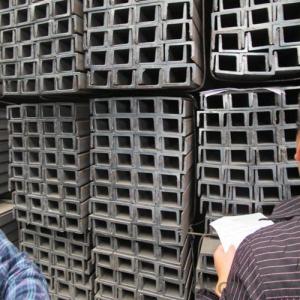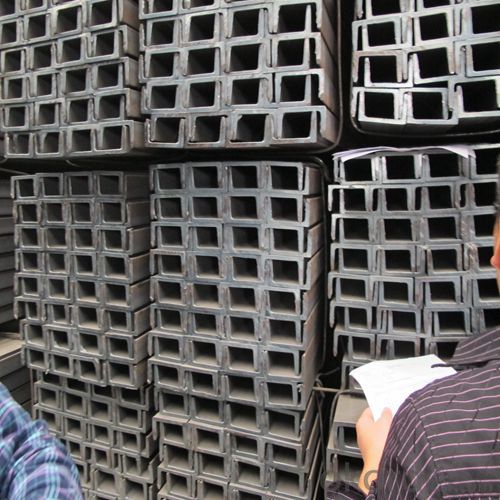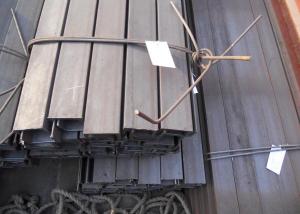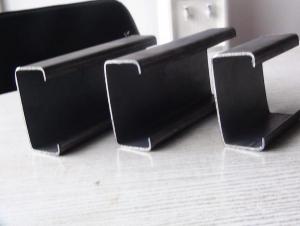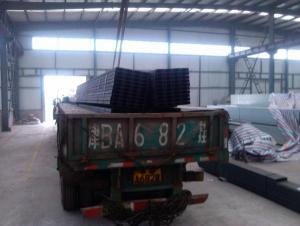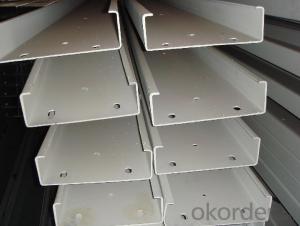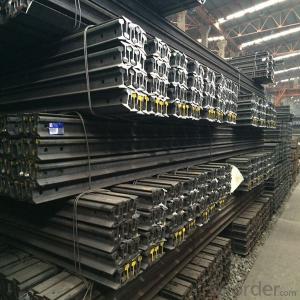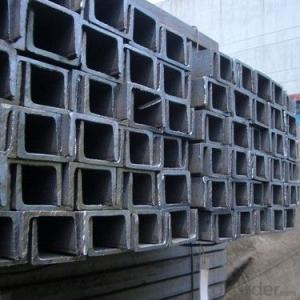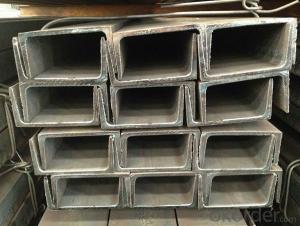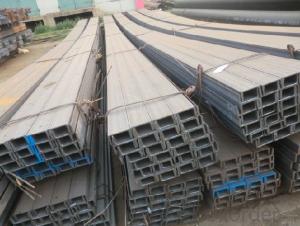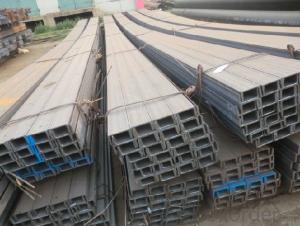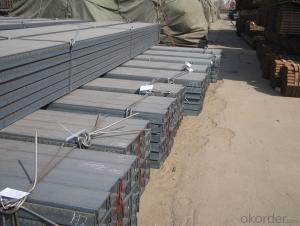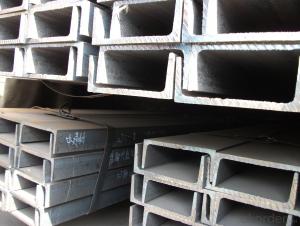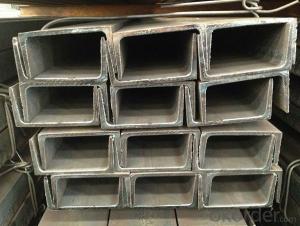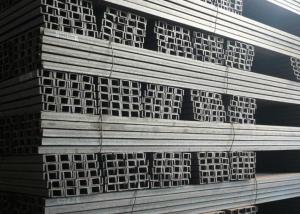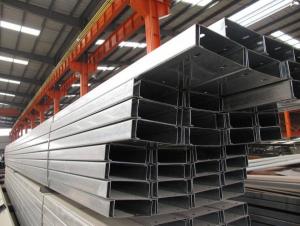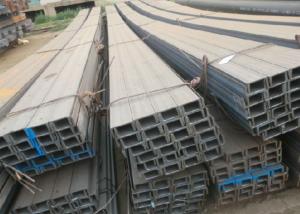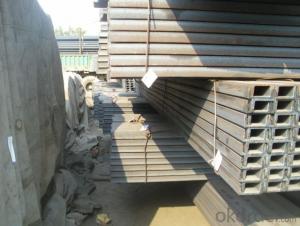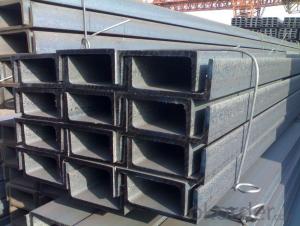Hot Rolled Steel JIS U-Channel GB U-Channel UPN
- Loading Port:
- Tianjin
- Payment Terms:
- TT OR LC
- Min Order Qty:
- 25 m.t.
- Supply Capability:
- 30000 m.t./month
OKorder Service Pledge
OKorder Financial Service
You Might Also Like
Specification
Product Description:
OKorder is offering Hot Rolled Steel JIS U-Channel GB U-Channel UPN at great prices with worldwide shipping. Our supplier is a world-class manufacturer of steel, with our products utilized the world over. OKorder annually supplies products to European, North American and Asian markets. We provide quotations within 24 hours of receiving an inquiry and guarantee competitive prices.
Product Applications:
Hot Rolled Steel JIS U-Channel GB U-Channel UPN are ideal for structural applications and are widely used in the construction of buildings and bridges, and the manufacturing, petrochemical, and transportation industries.
Product Advantages:
OKorder's Hot Rolled Steel JIS U-Channel GB U-Channel UPN are durable, strong, and resist corrosion.
Main Product Features:
· Premium quality
· Prompt delivery & seaworthy packing (30 days after receiving deposit)
· Corrosion resistance
· Can be recycled and reused
· Mill test certification
· Professional Service
· Competitive pricing
Product Specifications:
Standard Applied: GB Standard, EN Standard(UPN), JIS Standard
Sizes: 50mm to 300mm
Material Grade: Q235B, Q345B, S235JR, SS400, ASTM A36
As shown in the figure:
JIS U CHANNEL | Standard h | Sectional b | Dimension s | t | Mass: Kg/m |
(mm) | (mm) | (mm) | (mm) | ||
50x25 | 50 | 25 | 3.0 | 6.00 | 2.37 |
75X40 | 75 | 40 | 3.8 | 7.00 | 5.30 |
75X40 | 75 | 40 | 4.0 | 7.00 | 5.60 |
75X40 | 75 | 40 | 4.5 | 7.00 | 5.85 |
75X40 | 75 | 40 | 5.0 | 7.00 | 6.92 |
100X50 | 100 | 50 | 3.8 | 6.00 | 7.30 |
100X50 | 100 | 50 | 4.2 | 6.00 | 8.03 |
100X50 | 100 | 50 | 4.5 | 7.50 | 8.97 |
100X50 | 100 | 50 | 5.0 | 7.50 | 9.36 |
125X65 | 125 | 65 | 5.2 | 6.80 | 11.66 |
125X65 | 125 | 65 | 5.3 | 6.80 | 12.17 |
125X65 | 125 | 65 | 5.5 | 8.00 | 12.91 |
125X65 | 125 | 65 | 6.0 | 8.00 | 13.40 |
150x75 | 150 | 75 | 5.5 | 7.30 | 14.66 |
150x75 | 150 | 75 | 5.7 | 10.00 | 16.71 |
150x75 | 150 | 75 | 6.0 | 10.00 | 17.90 |
150x75 | 150 | 75 | 6.5 | 10.00 | 18.60 |
Package & Delivery: Steel U Channel
The steel u channel will be packed in bundle with steel wire at each end of every bundle and color marking in order to help the customer to recognize his goods more easily at sight.
And steel u channel could be loaded into 20ft or 40ft container, or by bulk cargo. If the weight of each bundle reaches less than 3.5 mt, the loading by break bulk cargo should be choosed. When the weight of each bundle reaches less than 3mt, the loading by container should be choosed.
As for the transportaion from mill to loading port, the truck will be usually used. And the maximum quantity for each truck is 40mt.
All in all, we could do in accordance with customer's request
FAQ:
Q1: Why buy Materials & Equipment from OKorder.com?
A1: All products offered byOKorder.com are carefully selected from China's most reliable manufacturing enterprises. Through its ISO certifications, OKorder.com adheres to the highest standards and a commitment to supply chain safety and customer satisfaction.
Q2: How do we guarantee the quality of our products?
A2: We have established an advanced quality management system which conducts strict quality tests at every step, from raw materials to the final product. At the same time, we provide extensive follow-up service assurances as required.
Q3: How soon can we receive the product after purchase?
A3: Within three days of placing an order, we will begin production. The specific shipping date is dependent upon international and government factors, but is typically 7 to 10 workdays.
Q4: What makes stainless steel stainless?
A4: Stainless steel must contain at least 10.5 % chromium. It is this element that reacts with the oxygen in the air to form a complex chrome-oxide surface layer that is invisible but strong enough to prevent further oxygen from "staining" (rusting) the surface. Higher levels of chromium and the addition of other alloying elements such as nickel and molybdenum enhance this surface layer and improve the corrosion resistance of the stainless material.
Q5: Can stainless steel rust?
A5: Stainless does not "rust" as you think of regular steel rusting with a red oxide on the surface that flakes off. If you see red rust it is probably due to some iron particles that have contaminated the surface of the stainless steel and it is these iron particles that are rusting. Look at the source of the rusting and see if you can remove it from the surface.
Images:
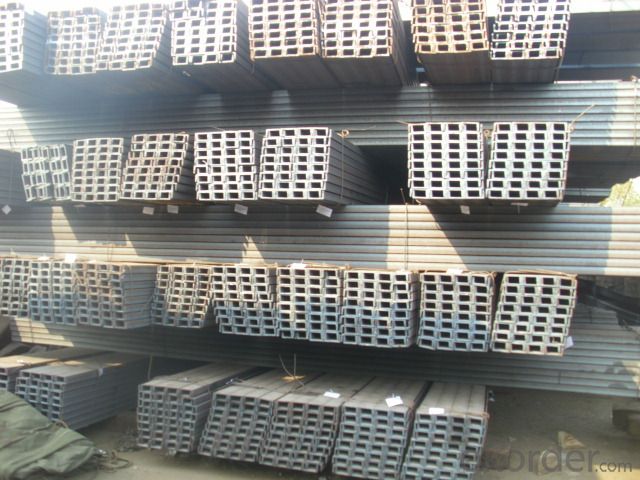
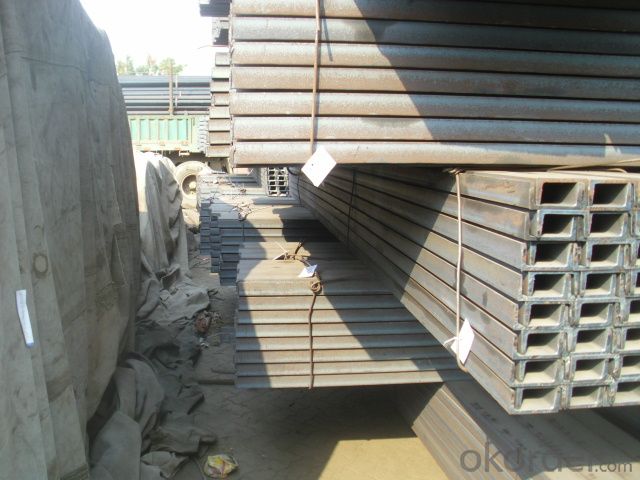
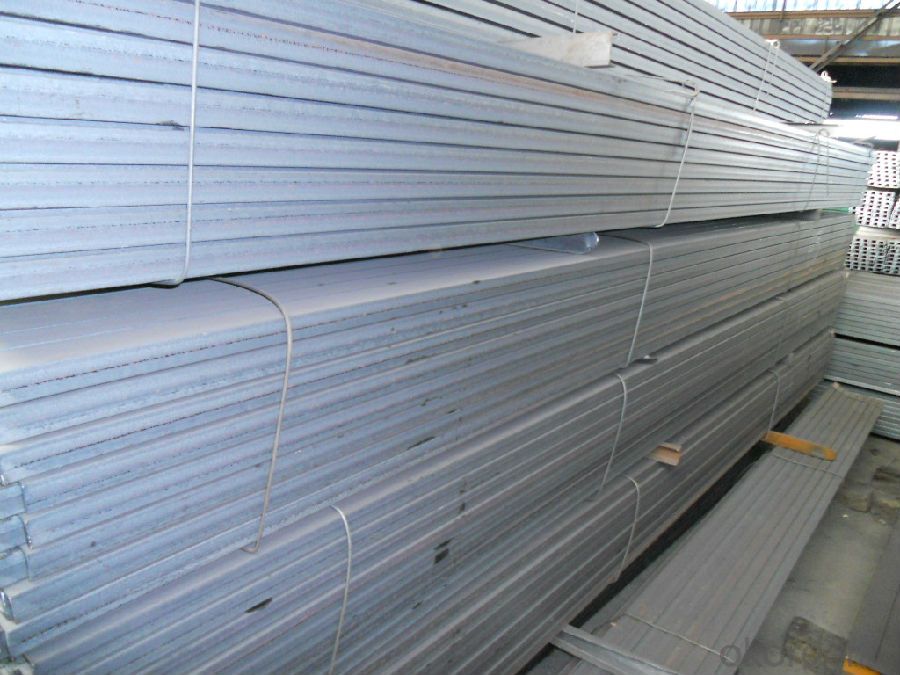
- Q: Can steel channels be used in the aerospace parts manufacturing industry?
- Yes, steel channels can be used in the aerospace parts manufacturing industry. Steel channels are often used in the construction of aircraft structures and components due to their high strength, durability, and resistance to deformation. They can be used in various applications such as framing, support structures, and reinforcement for critical aerospace parts. Steel channels provide structural integrity and stability, allowing for the safe and reliable operation of aerospace vehicles. Additionally, steel channels can be easily fabricated and welded, making them an ideal choice for the aerospace industry, where precision and quality are of utmost importance.
- Q: Can steel channels be used in residential construction?
- Yes, steel channels can be used in residential construction. Steel channels are structural supports made of steel that have a C-shaped cross-section. They are commonly used in building construction to provide structural stability and support for various elements such as walls, floors, and roofs. Steel channels offer several advantages in residential construction, including their high strength-to-weight ratio, durability, and resistance to fire, rot, and pests. They are versatile and can be used in a variety of applications, including framing, wall studs, and roof trusses. Additionally, steel channels can be easily customized and cut to specific lengths, making them suitable for various building designs and requirements.
- Q: How do steel channels resist impact and vibrations?
- Steel channels resist impact and vibrations due to their high strength and stiffness properties. The structural design of steel channels allows them to distribute and absorb the energy generated by impact or vibrations, minimizing any potential damage or deformation. Additionally, the inherent damping characteristics of steel help to dissipate vibrations, reducing their impact on the overall structure.
- Q: Can steel channels be used for modular construction systems?
- Yes, steel channels can be used for modular construction systems. Steel channels are versatile and have high strength, making them suitable for various applications in modular construction, such as framing, support structures, and connections. They provide stability and durability to modular buildings and can be easily assembled and disassembled, allowing for flexibility and ease of modification.
- Q: Can steel channels be used for framing?
- Certainly! Framing can be achieved using steel channels. These channels, known for their versatility, are extensively utilized in construction for multiple objectives, one of which is framing. Their robustness and longevity make them the ideal choice for providing structural reinforcement to buildings and other structures. By effortlessly welding or bolting steel channels together, a sturdy framework can be established to support walls, roofs, and floors. Due to their stability and resistance against bending and warping, steel channels are commonly employed in industrial, commercial, and residential construction ventures. Moreover, their availability in various sizes and thicknesses allows for flexibility in design and construction.
- Q: The following steel is not section bar, is it? A. thread steel, B. steel pipe, C. track, D. channel steel
- The thread steel belongs to the small section steel, the track and the channel steel belong to the large section steel.According to the shape of the cross-section, the steel is generally divided into profiles, plates, pipes and metal products in four categories.Therefore, the steel pipe belongs to the pipe, not the profile.
- Q: What are the advantages of using steel channels over other materials?
- One advantage of using steel channels over other materials is their strength and durability. Steel channels have a high tensile strength, allowing them to withstand heavy loads and resist bending or warping. Additionally, steel is highly resistant to corrosion, making it suitable for outdoor applications or in environments with high moisture levels. Another advantage is the versatility of steel channels, as they can be easily fabricated and shaped to meet specific design requirements. Furthermore, steel is a sustainable material that can be recycled, reducing the environmental impact.
- Q: Can steel channels be used in rooftop installations?
- Indeed, rooftop installations can utilize steel channels. In the realm of construction, steel channels are frequently employed due to their robustness and resilience. In the context of rooftop installations, steel channels serve numerous functions, encompassing support for solar panels, HVAC units, and other equipment. Notably, they furnish a stable and dependable foundation for these installations, effectively enduring the weight and strain associated with rooftop applications. Additionally, steel channels can be tailor-made and manufactured to meet specific needs, ensuring effortless installation on rooftops. In summary, steel channels prove themselves to be a dependable and pragmatic option for rooftop installations.
- Q: Can steel channels be used for platform stairs?
- Yes, steel channels can be used for platform stairs. Steel channels are often used in construction for their strength and durability. They provide excellent structural support, making them suitable for stairs and platforms, especially in industrial or commercial settings where heavy loads and frequent use are expected. Steel channels can be easily fabricated and welded to create a sturdy and reliable staircase. Additionally, they can be customized to meet specific design requirements, such as the desired height, width, and angle of the stairs. Overall, steel channels are a popular choice for platform stairs due to their strength, versatility, and ability to withstand heavy foot traffic.
- Q: How do steel channels perform under cyclic loading?
- Steel channels generally perform well under cyclic loading. The structural integrity and durability of steel channels allow them to withstand repeated loading and unloading without significant deformation or failure. The robustness and high strength-to-weight ratio of steel make it an ideal material for withstanding cyclic loading, making steel channels a reliable choice in various applications, particularly in construction and engineering projects.
Send your message to us
Hot Rolled Steel JIS U-Channel GB U-Channel UPN
- Loading Port:
- Tianjin
- Payment Terms:
- TT OR LC
- Min Order Qty:
- 25 m.t.
- Supply Capability:
- 30000 m.t./month
OKorder Service Pledge
OKorder Financial Service
Similar products
Hot products
Hot Searches
Related keywords
